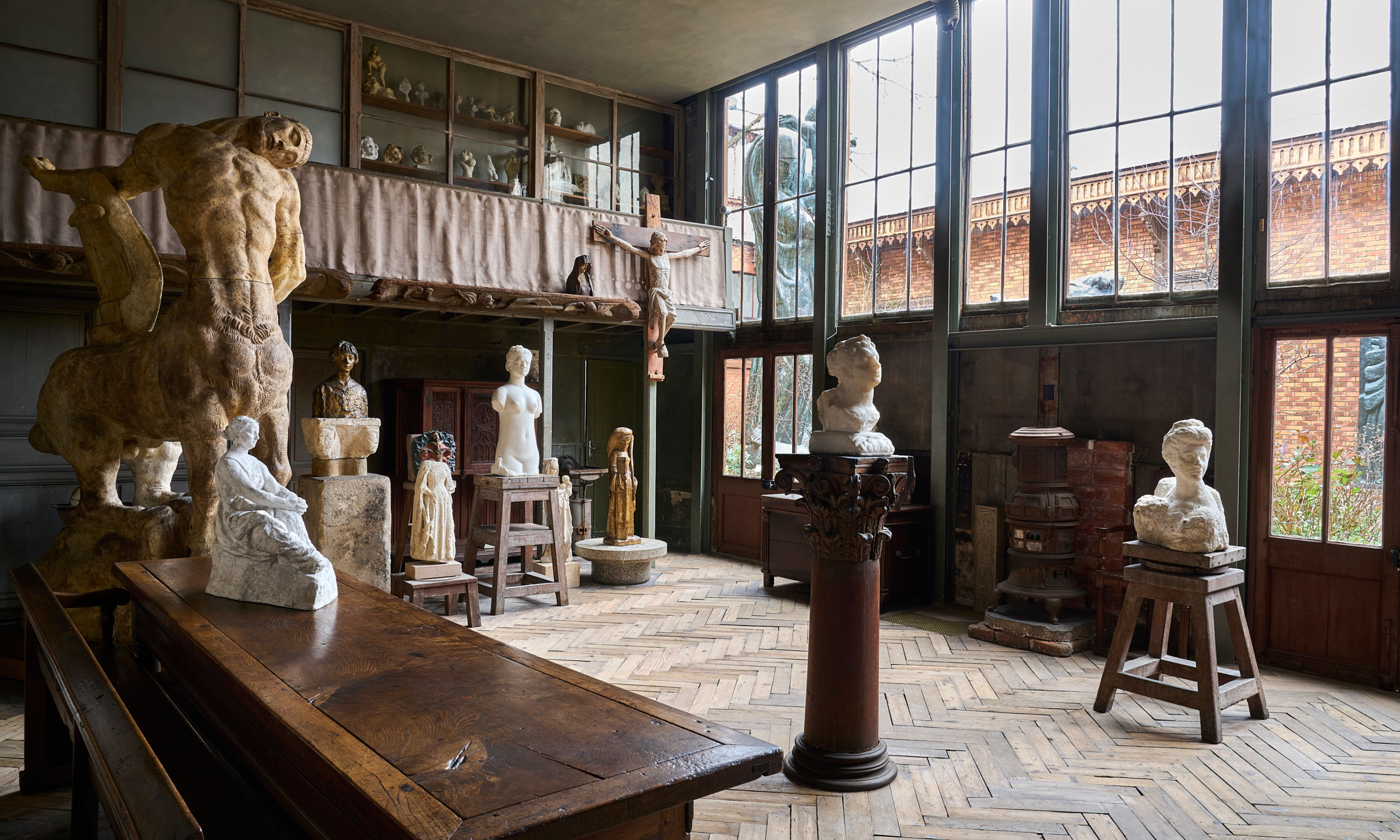A sculpture studio with works by Antoine Bourdelle in the newly renovated Musée Bourdelle © Pierre Antoine
The Musée Bourdelle in Paris, dedicated to the little-known work of the French sculptor Antoine Bourdelle, reopened on March 15 after closing last August for the completion of a two-year, €5m restoration programme and a makeover of its permanent collection.
To mark the reopening, the museum is hosting a temporary exhibition of work by the French contemporary artist Philippe Cognée, running until July 16.
More than 40 years after his death in 1929, Bourdelle gained an international reputation as a pioneer of 20th-century monumental sculpture. An assistant, collaborator and friend of Auguste Rodin, Bourdelle was also a friend-turned-rival of Aristide Maillol and a teacher of a generation of younger artists including Alberto Giacometti, Germaine Richier and Hans Arp.
Inaugurated in 1949, the museum is centred on the sculptor's Montparnasse studio and home, 19th-century artists' workshops and courtyard gardens, which were bequeathed to the City of Paris by his widow Cléopatre.
In 1961 an exhibition hall was added to display plasters of Bourdelle’s best-known monumental works. A further extension, a minimalist-style wing designed by the Pritzker prize-winning architect Christian de Portzamparc, was completed in 1992. The latest makeover has added a restaurant converted from an apartment formerly occupied by Bourdelle's daughter Rhodia and her art deco designer husband Michel Dufet.
The studio, made of timber and built in 1878 on the site of an abandoned limestone mine, was structurally fragile, lacking foundations and affected by rising damp. A survey by the Paris inspectorate of quarries found the ground beneath the building was riddled with a network of tunnels which had to be filled in with cement, the museum's director Ophélie Ferlier-Bouat tells The Art Newspaper. “I don't know exactly how many tons of cement, but it was an awful lot,” she says.
The timber frame, originally intended as a temporary structure, has been strengthened by the insertion of a reinforcing steel cage. This has also allowed the restaurant space to be opened on the floor above. The high north-facing windows have been replaced to increase the amount of light in the space. Parquet wood floors, badly damaged by damp, have been restored, and the walls and roofs have been damp-proofed and insulated.
The seven-month closure has also allowed a complete reworking of the permanent exhibition spaces by the architects Dominique Brard and Sandra Courtine, specialists in museum design and scenography. The new layout organises the collection in a sequence of ground-floor rooms arranged thematically and chronologically around the courtyard garden. They include spaces focused on Bourdelle's 18-year fin-de-siècle collaboration with Rodin; his evolution towards symbolism and Expressionism; his sculpted friezes and reliefs (1910-13) for the Théâtre des Champs-Elysées in Paris, for which the dancer Isadora Duncan posed as his model; and his relationship in the 1920s with younger Modernist artists such as Arp, Richier and Giacometti.
“The philosophy of the museum used to be monographic, it was all about Bourdelle,” says Ferlier-Bouat. “Now the idea is to reinscribe him into a context, which is the history of sculpture.”
To support this, the permanent display has been expanded with 35 more sculptures on show, including loans from the Giacometti Foundation, the Paris Museum of Modern Art and the heirs of Germaine Richier.
The choice of the sculptor and painter Philippe Cognée for the opening show reflects this new focus. The core of the show, in the museum’s Portzamparc wing, is a monumental work, titled Le Catalogue de Bâle (2013-15). It consists of more than 1,000 pages of photographs ripped at random from a decade of catalogues of the Art Basel fair and overpainted with Cognée’s signature hot wax.
Ferlier-Bouat, who came from the Louvre sculpture department to run the museum in September 2021, credits the idea for the show to her predecessor Amélie Simier, now the director of the Musée Rodin. She says she plans to continue in the same vein, with a show next year putting Bourdelle in dialogue with Rodin, and, in 2025, putting a spotlight on the creative and workshop axis between the worlds of sculpture and fashion.

